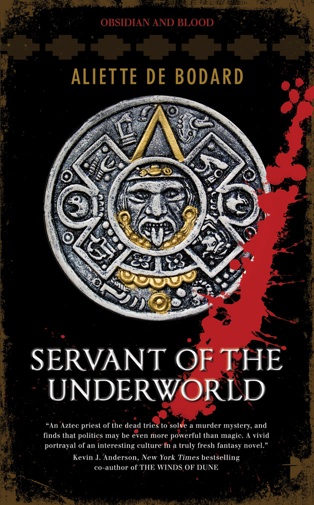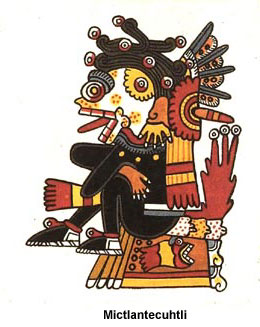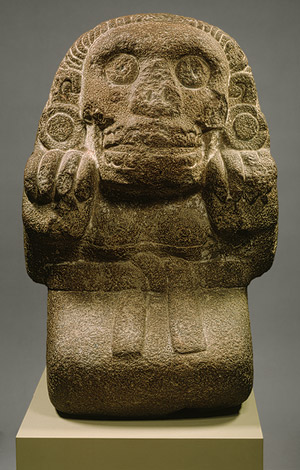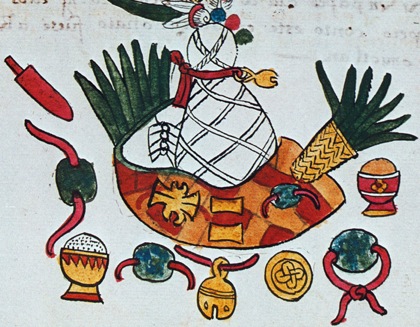Your semi-daily Vietnam pictures
Temple of Literature, Hanoi
Old City, Hanoi
Temple of Literature, Hanoi
Old City, Hanoi
Your Sunday morning pimpage:
-Fellow WIBite Keyan Bowes has a story up at Cabinet des Fees, “Nor Yet Feed the Swine”, a creepy take on the Curlylocks nursery rhyme. Bet you’ll never see strawberries the same way after reading it…
-Fellow VDer Stephen Gaskell‘s “Aequestria” is in the current issue of Interzone: a neat SF take on colonisation, with a nice twist at the end (and gorgeous, full-colour artwork by Jim Burns).
-And, with some delay because I hadn’t got around to reading it until recently, Angela Slatter‘s “The Chrysanthemum Bride” in Fantasy Magazine, a horror story set in Ancient China, about a vain woman taken to be the bride of the Emperor. You know it’s going to end badly and suspect some of the ending, but you still can’t stop until the end…
(somewhat spoilerish)
So… attempted to watch Twilight yesterday with the BF, in English without subtitles. Gave it up after it became clear the BF was not following the English but could predict how it was all going nevertheless (a particularly hilarious remark was “are you sure Bella’s not a vampire already? I mean, pale skin, Gothic makeup, those kind of all add up, don’t they?” I had to explain the Twilight theory to him, which made him roll his eyes).
Settled instead for The Thirteenth Floor, a movie about guys who run a simulation of the real world and make an extraordinary discovery. Divergent opinions on this one. The BF liked it; I wasn’t so keen. I was ahead of the major plot points by 20-30 minutes. And I’m not prone to rewriting stuff ordinarily, but I thought my first hypothesis about the nature of the world was much more fun than what the movie turned out to be about: the Russian doll’s game of a simulation within a simulation wasn’t nearly as interesting as my theory that the simulation was bleeding into the real world and making everyone act crazy. The “oh, we all live in a simulation ourselves” was… lacking subtlety, I guess?
Still–way better than Twilight (yes, I know. Not hard).
It takes a LOT of time to write blog posts (not the ones where I tell you what I had for breakfast, but those where I discuss a particular topic). My whole week seems to have disappeared into those (the reason they’re not up on my blog is that they’re for guest blogs). So, no novel progress, but 5k+ words on various subjects that caught my fancy.
And, on a completely unrelated matter, in the series of major suckage that makes you want to kick the universe: writer Kage Baker is gravely ill, with metastasized cancer. An update here, and email and postal addresses to send messages and cards (she’s in no state to deal with phone calls, but she could definitely use messages and cards).
Arg.
So, starting from Sunday, I’m not going to be the world’s most available person.
That’s because I’m leaving two weeks for Vietnam with my family. Program includes Hanoi, Hoi An and Saigon. This is the first time I go to Vietnam, and it’s going to feel… peculiar.
Haven’t committed yet, but there’s a very good chance I’ll be taking my laptop (several of the hotels have wifi) and do some occasional email checking. Also, this isn’t going to be the last you see of me by any means, as I’ll be doing a series of guest blogs (more details on that later).
(yes, I know, I should be watching Red Cliff 2. We seem to have hit a technical snag, so I’m lazing about on the internet instead)
Found this quite by accident, while browing in a bookshop: they’re reissuing Horowitz’s Power of Five as Raven’s Gate, Evil Star, Nightrise and Nekropolis. Basically, it’s the story of five children, who a long time before, sealed an ancient evil away from the world. Now eons have passed, and the children have reincarnated in the 20th-century world, where they have forgotten their powers–and it’s a bad time, too, because what they sealed away wants out, and it’s sending a number of unpleasant people after them. It’s way less cutesy than it seems, at least in the versions I read, which scared the crap out of me when I was twelve or so.
What I remember reading were books with different titles, namely The Devil’s Doorbell, The Night of the Scorpion The Silver Citadel, and The Day of the Dragon. From the Wikipedia summary, there seem to be a fair amount of differences between the books and the ones I read, not least that a lot of the characters seem to have changed names (and, in some cases, genders: I remember the hero of book 4 was an English guy named Will, but now he seems to be a Chinese girl going by Scarlett). Going by the summaries, the plot of book 4 seems to be radically different, too…
Not sure whether to order them or not–if Horowitz gets around to writing book 5, I would love to finally read the end of that series, which has always left me frustrated–but I’m afraid they’re going to be too radically different from those books I remember and treasure…
So, 74k words into Harbinger, with the longest chapter yet. The small incoherences (which I keep noting at the end of the book in order to fix them) are running to more than a page now. But on the plus side, the end is nigh. I can feel it–we’re entering the climax at the end of this chapter, and boy is it going to be huge fun.
Meanwhile, Blue Tyson reviews Servant of the Underworld over at Not Free SF, and mostly likes it:
Generally speaking in a fantasy novel you will find that the priests of the Death Cult are not very nice people. Or, at least the antagonist or people to be removed as obstacles. See Graham Masterton’s Pariah for example of the exact same god our protagonist here is the Servant of.
Not so here. Of course, your average fantasy novel is rather more likely to not be set in an Aztec city redolent with quetzal birds and jaguar spirits as opposed to ponies and pointy-hatted prestidigitators.
So, points for giving something different a shot.
A very nice review of my Asimov’s story “The Wind-Blown Man” here on Tangent Online by Carl Slaughter, as well as some discussion over on the Asimov’s forums (some good, some bad). The upshot is mainly that it reads like a fantasy, which doesn’t surprise me: it’s actually SF, but it’s hard to prove it when the science developed along an alternate timeline which has nothing to do with our own, with biology and genetics developing far more efficiently than mechanics and mathematics[1]. It’s kind of interesting how everything ends up sounding like magic when you don’t have familiar technological landmarks. Mm. There’s got to be something I can take out of this…
That’s all for today. I’m off to watch Red Cliff 2 (I have to say the long version makes a lot more sense than the awful truncated version they showed in the French cinemas)
[1]Yup, I know maths are integral to science as we know it now. But if you choose to view science as a system to explain the world, it’s conceivable that another civilisation might come up with a completely different system that would also explain the world and allow us to predict some of the things that would happen. Then it would do exactly the same thing science does today. Our science was mostly shaped by Western/Greek/Indian thought, which gives a place of honour to mathematics–but the Chinese have always been more interested in biology and how the human body was a microcosm of the world, so I went ahead and used that as a basis for developing the new science. Feel free to argue with me; I’m well aware this isn’t the standard belief by any means…
So, back to the semi-regular schedule… Today’s fun thing: the BF’s internet provider apparently upgraded their antivirus system with a faulty patch, which classified 90% of all incoming mail as spam, notified the sender that the mail was spam, and erased it from the servers.
(yes, go figure).
Several mails have been eaten past recovery. Hopefully nothing too important. The BF is (understandably) fuming; I’m left wondering how on earth they thought an antivirus that erases mails would be a good idea. They’re trying to throw up a smokescreen by saying that they don’t keep viruses for security reasons, but that still leaves the question of what happens when the antivirus is wrong. I suspect you’re screwed. What a great concept…
Mind you, my own internet provider puts spam in an “undesirable folder” which is only available through their clunky online email software, so it’s only marginally better.
Well, that’s it. I would seem to have become a published novelist. Today, my Aztec fantasy-mystery Servant of the Underworld hits the UK and Australia, courtesy of Angry Robot.
I can’t help flashing back to that time ten years ago, in London, when I first thought it would be awesome to write a fantasy in English–and all but killed the thought because my cynical self had just pointed out that fantasy was horribly complicated to write because of all that research, that English wasn’t my first language, and that I was bound to bungle it all. It took me ten years and a lot of wordage, but I’m awfully glad I decided to ignore the obstacles and go ahead anyway. Sometimes, things work out a zillion times better than you’d ever expected.

Year One-Knife, Tenochtitlan – the capital of the Aztecs. The end of the world is kept at bay only by the magic of human sacrifice. A priestess disappears from an empty room drenched in blood. Acatl, high priest, must find her, or break the boundaries between the worlds of the living and the dead. But how do you find someone, living or dead, in a world where blood sacrifices are an everyday occurrence and the very gods stalk the streets?
And there’s a new review over at Candyman:
…the author has thoroughly researched the language, customs, and such but uses it just enough to flavor her narrative, not over power it. The book reads more like a mystery rather than dark fantasy; either way, it’s very hard to put down. (…) This book is beautifully written and a pleasure to lose oneself in. (…) Please see for yourself and pick up a copy!!
Celebrating tonight with BF. Now all I need is an actual spotting of the book in the wild for it to feel real…
This is part 4 of a series of posts on the setting of my Aztec fantasy series Obsidian and Blood, as a leadup to the release of Book 1, Servant of the Underworld, published by Angry Robot/HarperCollins (more information here, including excerpts and a book trailer). You can find part 1 (the Valley of Mexico) here, part 2 (the city of Tenochtitlan) here, and part 3 (about the Sacred Precinct and religion) here.
4. Acatl, and death in Mexica religion
My main character in the book is Acatl, High Priest for the Dead, who has the responsibility for investigating magical offences in the capital city of Tenochtitlan.
The word Acatl means “Reed”. It’s shorthand for his actual name, which is his date of birth in the calendar: Chiquacen Acatl, which means “The day Six Reed” [1]. I chose that name back when I was first writing “Obsidian Shards”, the very first story that featured him, for a number of reasons. The first is the association with the god Quetzalcoatl, Ce Acatl Topiltzin (see previous article)–who, among other things, was the patron of priests and of knowledge. The second is the symbolism of the day Six Reed itself: it has associations both with Mictlantecuhtli, the god of death (Acatl’s patron), and with the god of Justice–a fitting set of protectors for a death priest engaged in the investigation of magical crimes. [2]
Acatl’s patron is Mictlantecuhtli, the god of death. His name means “Lord of the Place of Death” (which I’ve shortened to “Lord Death” in the book for ease of reading), and he is one of the gods associated with the end of life. You can see a picture of him below, with the characteristic skeletal look.

The Aztec death system, like its religion, is complex. The basic idea is that there are several destinations for the spirits of the dead. What determines where someone ends up isn’t the respect of a particular morality (as in Christian religion). Instead, the only separating factor is the manner of death.
For those happy few who died in battle, their destination was Ilhuicatl Tonatiuh, the Heaven of the Sun. This included warriors who died on the battlefield, most sacrifice victims, as well as women who have died in childbirth. This last one can seem odd–but for the Mexica, childbirth was a struggle to bring a captive (the baby) into the world, an activity as dangerous as fighting other warriors in an effort to secure prisoners for sacrifice. Once ascended, the men would accompany the sun to its zenith; the women would then take over, from zenith to sunset. After four years, the spirits would come back into the mortal world: the men as butterflies, the women as moths. Below is a statue of a woman who has died in childbirth–transformed into a Cihuateteo, a fearsome female deity.

Another possible destination was Tlalocan, a watery paradise ruled by Tlaloc, the god of rain and storms. Those destined for Tlalocan had died of drowning, lightning strikes, and associated diseases (such as dropsy). There, they would enjoy the bliss of a land where crops bloomed year-long–Tlalocan is very much a peasants’ paradise, as Ilhuicatl Tonatiuh is that of warriors.
The babies who had died while still breastfeeding would go to Omeyocan, the Place of the Duality, where the supreme gods Ometecuhtli and Omecihuatl would keep their spirits until they could be reborn after the end of the current age. In Omeyocan, the babies would suck the sap from a huge tree, as they had sucked milk from their mothers’ breasts. You might wonder what is the significance of breastfeeding: the answer is that it goes back to the link between blood and fertility. Those children are the ones who have never tasted the fruit of the earth–the fruit that have been sprouted thanks to the blood offerings of men. Hence, those babies have no debt either to the earth or the sun, and their spirits exist in a state much like the Christian state of grace.
You’ll notice that this barely covers any people at all. What of all the other spirits? The vast majority of people, those who did not fall into any of the categories outlined above, would go down into Mictlan, the Place of Death, or the underworld. This was a gloomy, cheerless place split over nine levels–from the entrance all the way down to the palace of Mictlantecuhtli and his consort Mictecacihuatl. On each of those levels, the spirit would face a gruelling trial. After four years of tribulation, the spirit reached the last level, where it was finally allowed to dissolve.
I adapted some of Mictlan’s trials into the underworld creatures Acatl deals with. The Wind of Knives, an elusive creature made of obsidian shards, corresponds to level five, where a wind as cutting as broken obsidian would tear the spirits apart. The beasts of shadows, with their taste for human hearts, come from level eight, where the spirit had to present a jade heart in order not have their own devoured by beasts.
Acatl himself takes on functions that pertain to all those places, since he investigates into magical crimes regardless of where the spirits might have gone (though he has access only to those spirits who have entered Mictlan, which can hinder him in his inquiries). I also gave him the more prosaic role of organising funerals, and helping the spirits’ passage into Mictlan. [3] Below is a particular form of funeral: a mummy bundle, which consists of putting the body in a foetal position, wrapping it in layers of clothes, and adding ornaments such as jade stones (the manner of disposing of the body also depended on the manner of death, but I’ll not go into details here).

And that concludes this series of articles about Aztec history–remember, Servant of the Underworld is out today if you want to check out what I did with all this nifty research. (order now–tell your friends–etc. :=) )
[1] The Mesoamerican calendar is a fascinating and complex system. I refer you to The Aztec calendar or Marie Brennan‘s article in Strange Horizons for brief introductions.
[2]In the series, I had to strike a balance between the Mexica fondness for tongue-twisting names, and readability for a Western audience unused to words of more than 4-5 syllables–so a lot of names were chosen for phonetic reasons and not because of any particular meaning.
If you’re curious, the names that do mean something, apart from Acatl and the gods’ names, are Ichtaca (“secret”), Mihmatini (“prudent one”), Palli (“leaf”), Teomitl (“arrow of the gods”), and Tizoc (“chalked leg”]). I’ll put up a character index at some point, promise.
For much the same reason of readability, I also fudged the rules for tacking on the honorific “tzin” at the end of a name (there’s a series of non-intuitive ways to tie together a noun and its “tzin”, but I figured I’d go a little easy on that before my readers went crazy).
[3]I fudged a bit here. There is, in reality, little evidence of a wide religious body associated with funerals. There is some reference to people who burnt bodies on pyres, but they seemed to have been officials rather than priests.